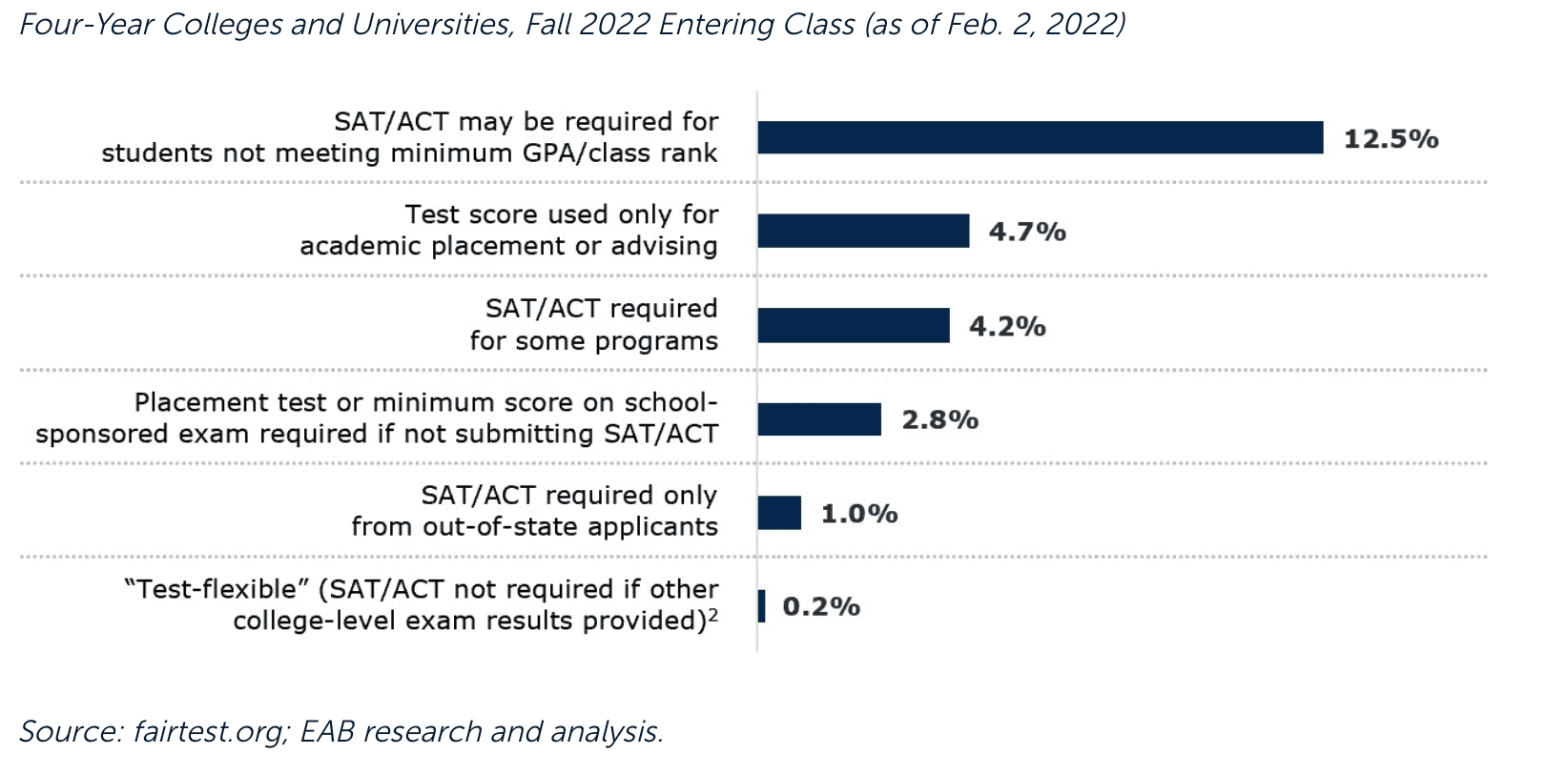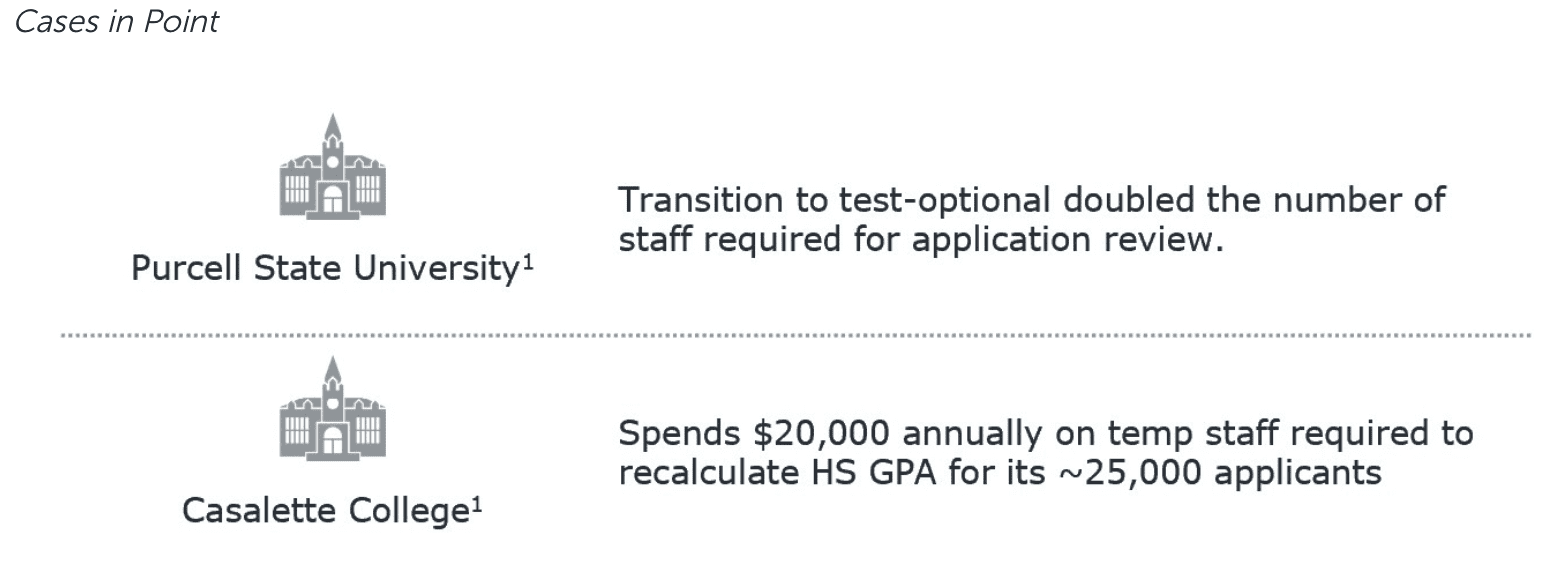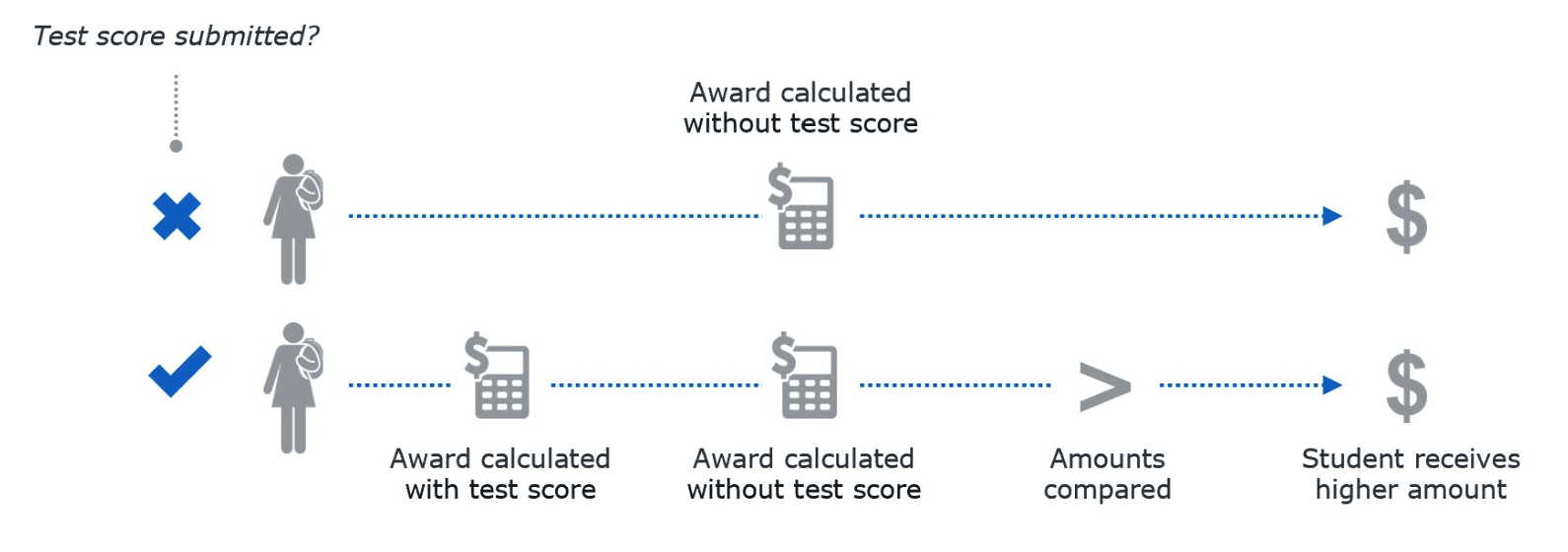3 lessons to inform your test-optional enrollment strategy in 2022
What you need to know about applicant evaluation, aid awarding, and market approach
March 3, 2022
At the start of the pandemic, many schools found themselves adopting a test-optional policy practically overnight. As someone who’s worked in just about every type of enrollment job – from being head of enrollment, to director of admissions processing, to a financial aid administrator – I know that this is no easy feat. Going test-optional has wide-reaching implications for your enrollment operations and strategy.
And not only is test-optional a huge undertaking, it’s also critical to do well: the effectiveness of your policy relies on careful design and solid execution. In my current role as a senior consultant for Enroll360 partners, enrollment leaders often ask me how they can do test-optional better. Below are three lessons to help schools improve their approach to recruiting, admitting, and awarding in the test-optional era.
Explore More Test-Optional Strategy Insights In Our New Insight Paper
Lesson 1: A clear, simple policy is best.
As schools relaxed testing requirements, they adopted a variety of stances about which applicants could be admitted without scores. Some institutions went with unconditional policies, like test-blind or test-optional for all students under all circumstances. Others created conditional policies, where only students meeting GPA thresholds or applying to a subset of programs could apply without a test score. It’s worth noting that for the fall 2022 entering class, a minority of schools fall into the conditional category.
-
<25%
of test-optional schools attach conditions to their test-optionality
Percentage of Test-Optional Institutions Using Specific Conditional Approaches

For institutions that can accurately assess student admissibility based on information other than test scores—something that all colleges should, in theory, be able to do—an “optional for all” approach is best. It can help you increase application volume by allowing as many students as possible to apply without the friction of submitting test scores. And it’s easy to explain to students, which is crucial.
We spoke with one school who’d posted a new test-optional policy to their website at the start of the 2022 admissions cycle, but the wording they’d used was ambiguous and seemed to imply that test scores were required. By mid-fall, their application volume was only about half as high as it had been at that point in time the previous year. After altering wording on their website and application to make it clearer that test scores were not required, they eventually saw a rebound in application volume.
Recommendation
Overinvest in communicating your policy. Avoid placing conditions on your policy, if possible, since that can suppress application volume. Include a simple statement of your policy in a prominent location on your website.
Lesson 2: Scope your applicant review process to your enrollment priorities.
Schools that have done well with test-optional over many years typically don’t depend solely on GPA to review applicants. At the same time, closer applicant review can come with a huge additional workload. Collecting, organizing, and interpreting additional data on students—for example, entering course-level information from transcripts into your systems—can double the number of hours it takes to review applicants. From my time in admissions processing, I know all too well how time-consuming it can be to manually enter course-level information, and I know how complex it can be to adjust a Student Information System to capture the right information for meaningful transcript review.
New Demands on Enrollment Teams’ Time

For those reasons, many test-optional schools—particularly those with higher admit rates—choose to limit close review to applicants with a higher risk of poor post-matriculation outcomes.
For the schools that do choose to take a closer look at some or all students, the review process can involve a broad set of considerations, typically including a detailed review of a student’s high school transcript. While there’s no standard formula for which student characteristics to consider, the chart below shows some common ones. The approach that makes the most sense for your school will depend both on your school’s high-priority student success outcomes and your resource constraints in evaluating applications.
Aspects of a Student’s Academic Profile Commonly Considered in Test-Optional Admissions

Another important factor to keep in mind is that many schools see an increase in applications from underrepresented students after going test-optional. Assessing these applicants, whose talents and abilities sometimes present differently than those of other students, can pose challenges for schools that have limited experience with this population.
Community-based organizations (CBOs), or groups that connect underrepresented students with colleges, can help. One of many ways in which CBOs can support is by identifying underrepresented students with a high likelihood to succeed. Generally speaking, CBO-affiliated students have higher levels of post-matriculation success than their non-CBO peers.
CBO-Affiliated Students Succeed at Higher Rates

Learn How College Greenlight Can Help You Diversify Your Recruitment Pipeline
Recommendation
Commit to closer applicant review where possible and choose an approach that matches your team’s priorities and resources. This can include doing a close review of only a subset of students and/or building relationships with CBOs.
Lesson 3: Take a “do no harm” approach to aid awarding.
While a lack of test scores can make admit decisions trickier, it often presents an even bigger problem for aid awarding. Without test scores, it can be more difficult to make a fine-tuned assessment of students’ ability, making it harder to set granular aid award levels.
As I mentioned earlier, setting a simpler policy can help make your institution more attractive to students. That lesson is especially true when it comes to explaining how a student’s test score (or lack thereof) will impact their aid award. The framing of test-optional aid-awarding that is easiest for students to understand is a “do no harm” approach—one where providing a test score can only increase the amount of aid a student receives.
“Do No Harm” Approach in Brief

There are different ways to design a “do no harm” strategy. Some approaches will favor GPA, while others will favor test scores in that high scores can help students “unlock” additional aid. Approaches can also involve balanced weighting of multiple inputs, including performance in core courses or difficulty of chosen curriculum, in addition to GPA, test score, and other factors.
Explore Ways to Design A “Do No Harm” Aid Policy
No matter which approach you choose, keep in mind that an ideal merit aid awarding strategy should be transparent, predictive of success, and granular enough to reveal small differences in a student’s likelihood to enroll.
Recommendation
Consider the implications of various aid-awarding models for your institution, along with the resources they’d require to execute. Keep a close watch of progress toward enrollment goals through the yield season and monitor and adjust accordingly.
More Blogs

Why do students pick the schools that they do?

What enrollment leaders are saying about the Great Opt-Out
